- Celebrating Over 15 Years
-
Track Delivery
- Powered by Apex Delivery Tracking
- About us
- Login
- (0)
- Cart(0)

| Our Price | $289.00 CAD |
| Our Price | $289.00 CAD |
| Our Price | $289.00 CAD |
Flagship Qualcomm Bluetooth platform QCC5181, Bluetooth 5.4 Supports LDAC, aptX Lossless | Physical control knob Desktop mode 650mW+650mW powerful output | Dual flagship 10-band high-precision PEQ | XMOS 16-core XU316 Four-way full balanced THX AAA 78+ amps | Multi-stage HiFi audio architecture
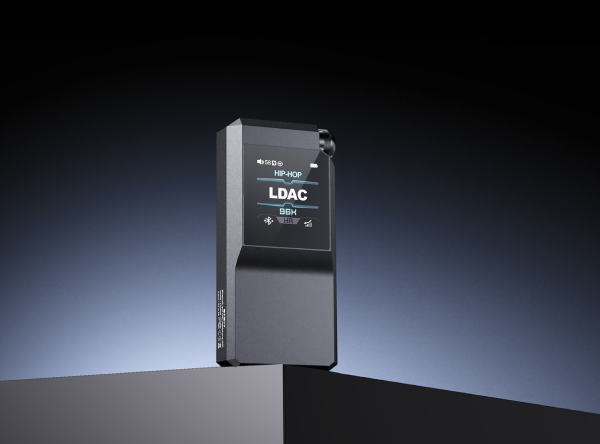
A master of all trades Unrivalled
The BTR17, brings together FIIO's years of expertise in developing DACs and headphone amps. Within a compact package, it fits flagship-level features such as a multi-stage audio architecture and precision power supply system comparable to other high-end players and DAC/headphone amp combos. It is truly a master of all trades that will once again become a new standard amongst Bluetooth headphone amps.
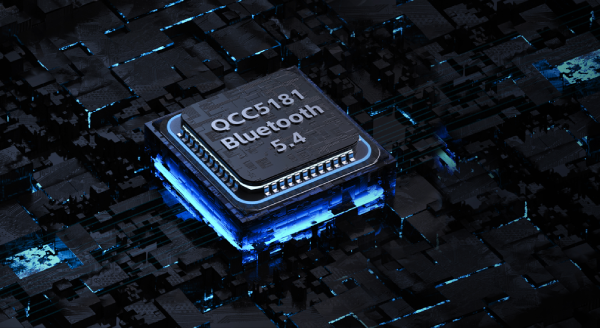
A new chip era New era of lossless Bluetooth Flagship Qualcomm Bluetooth chip QCC5181
The BTR17 is equipped with Qualcomm’s new flagship QCC5181 Bluetooth chip, which not only complies with the Bluetooth LE Audio standard and has transmission bandwidth capacity of 2.1Mbps, but also is capable of lossless quality within the aptX Adaptive system. This means the chip is capable of achieving CD-level lossless sound quality over Bluetooth audio, bringing you ever closer to the music with all of its intricate details.
Additionally, the BTR17 also supports the latest Bluetooth standard – Bluetooth 5.4. It also supports the LDAC, aptX Adaptive 96kHz/24bit Bluetooth audio codecs, which when combined with Snapdragon Sound technology means your Bluetooth listening experience has never sounded this good before.
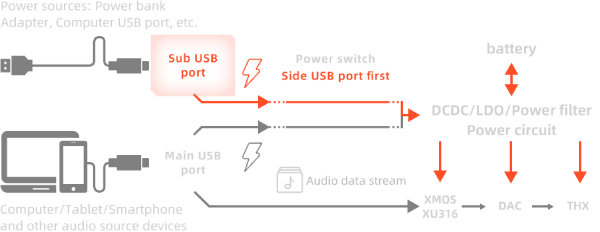
Patented desktop mode Independent power supply, ”Boosted” performance
On the BTR17 is a dedicated D.Mode (desktop mode) switch along with a port to connect an external independent power supply. When in desktop mode, if you connect the BTR17 to a phone as a dongle DAC and headphone amplifier you can also choose to connect an external power supply to the BTR17 via its dedicated power port. Doing so means that the BTR17’s battery will be completely powered via USB, which not only avoids overcharging and over-discharging its built-in battery but also means it is capable of powerful audio output without consuming the connected phone’s battery.
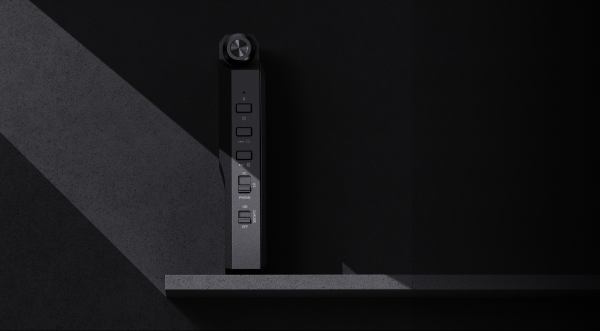
Covering all uses One switch for multiple uses
On the BTR17 is a convenient PC/BT/PHONE three-position switch which allows it to seamlessly switch between operating modes. Switching modes allows the BTR17 to optimize its power supply status according to the device connected, making it perfect for various use cases.
PC (computer sound card): The device is completely powered by the computer.BT (Bluetooth DAC and amp): The device is powered by the internal battery, and when connected to USB can be used for charging and power supply.PHONE (phone dongle): The device’s internal battery participates in power supply, reducing the power consumed from the connected phone.
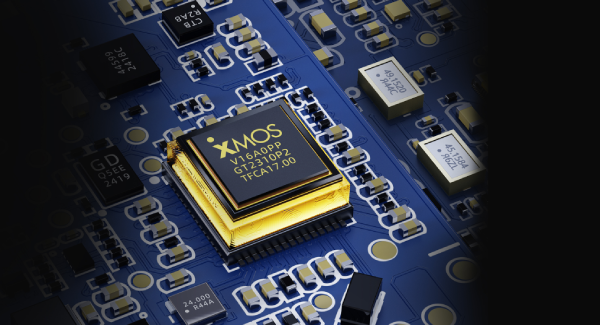
Cleverly innovating XMOS 16-core XU316
The USB chip employed is the flagship XMOS XU316, which boasts lower latency, more stable transmission, and better compatibility than typically used USB controllers. Support for 768kHz/32bit audio, DSD512 native, and MQA full decoding means that the chip can handle almost any audio stream that comes its way. The XU316’s ample computing power also enables a high definition PEQ supporting up to 192kHz audio on the BTR17.
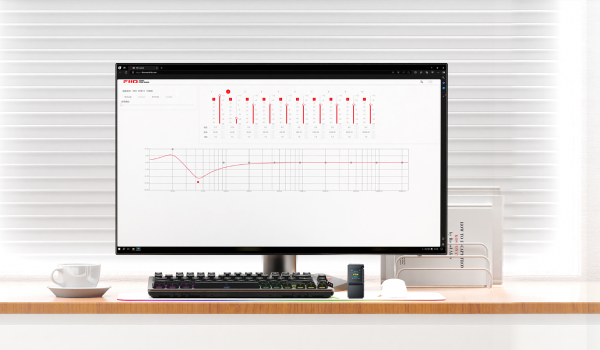
Sound tuning,completely in your hands 10-band high-precision lossless PEQ
FIIO has worked constantly to deeply integrate software and hardware in order to create user-friendly apps and web interfaces. The continuously refined proprietary PEQ adjustment algorithms allow you to finely adjust EQ frequency points, gain, bandwidth, and Q value to your liking. This fully lets you simulate or correct the frequency response curve of various headphones. Additionally, you can import, export, share, and save EQ curves, enabling everyone to enjoy the fun of tuning.
*Web-based PEQ location: FIIO official website top status bar – Support -- Web-based PEQ settings.
*The side of the device features a dedicated EQ shortcut key, which you can press to quickly select your desired EQ settings.
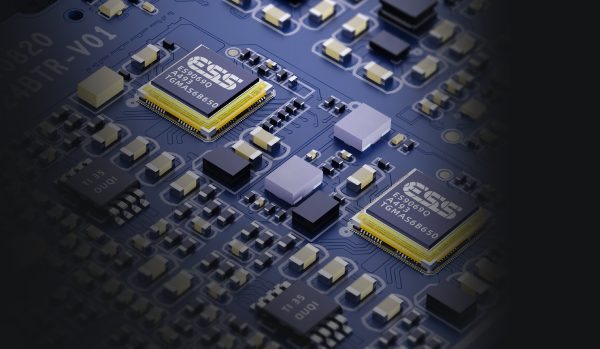
Dual cores and four channels, Outstanding performance Dual flagship ES9069Q DACs
Inside the BTR17 are two ESS ES9069Q DACs based on the fourth-generation 32-bit HyperStream architecture, achieving high performance while using less power. This architecture helps to further reduce digital noise within the DAC, allowing it to hit 130dB dynamic range and -120dB total harmonic distortion. The result is a richer, musical sound against a cleaner audio background.
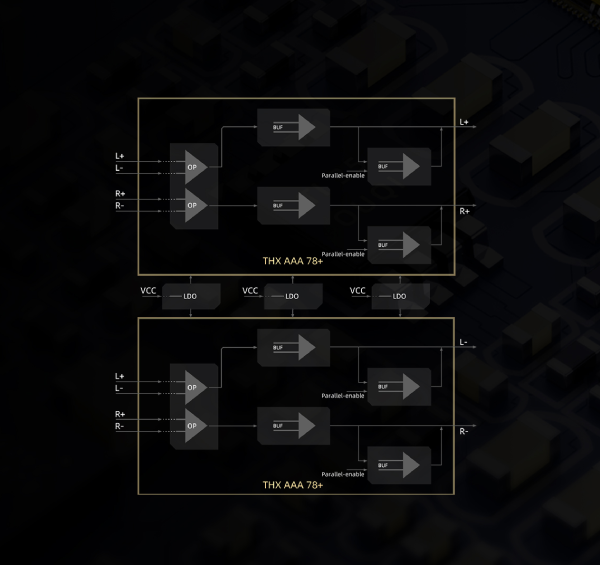
Thoroughly improved THX AAA 78+ headphone amp
The BTR17 uses the THX AAA 78+ headphone amp, as in the renowned FIIO KA17 and M23. The four-channel fully balanced design utilizing 8 op-amps in parallel ensures robust yet controlled power, for clearer and more natural sound.
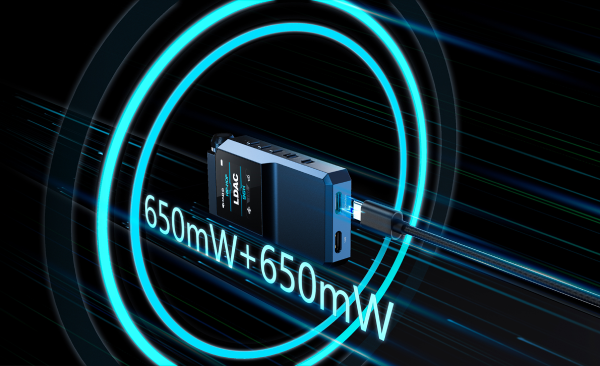
Miniature amp Power sound
When the POWER IN port is connected to USB power and desktop mode is activated, the BTR17's THX headphone amp will use four op-amps in parallel for current amplification to fully unleash its potential. The result is a balanced output power up to 650mW+650mW, an astonishing 203% increase compared to the BTR7. This is comparable to even desktop headphone amplifiers.
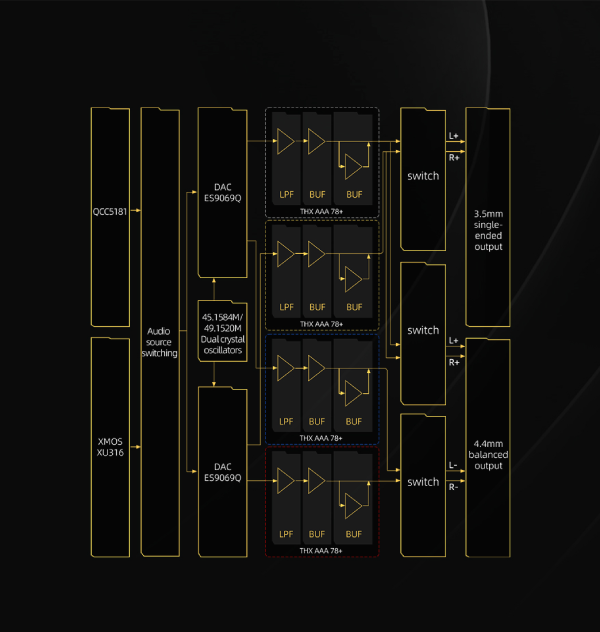
Multi-stage HiFi audio architecture Comparable to premium digital audio players
The BTR17 integrates mid-to-high-end HiFi player-level signal processing within its compact body. Digital signals are deftly handled by the dual-clock digital audio and DAC. LPF preamplification and multi-stage analog audio processing ensure details and the dynamic range within audio signals are precisely restored, comparable to premium digital audio players.
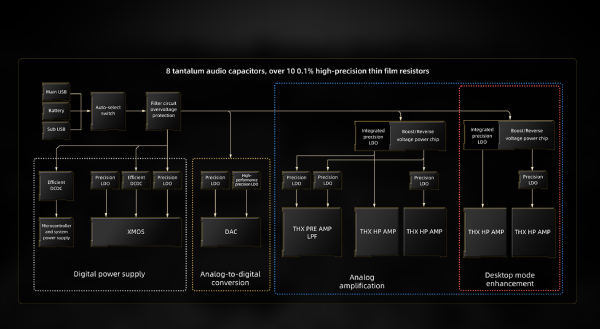
Multi-stage power supply Precise power allocation
Three-stage ten-rail precision power supply, Boundless energy
Inside the BTR17 is a three-stage, three main rails precision power supply. The first stage is composed of filtering + overvoltage protection, the second level handles DC-DC boost conversion, and the third stage is comprised of high-precision LDO voltage stabilization. There is an independent power supply rail for the digital signal, digital-to-analog conversion, and analog amplification parts of the audio circuit as well as more than 10 small rails. This specially-designed power supply provides a stable and ample energy supply, laying a solid foundation for excellent sound quality.
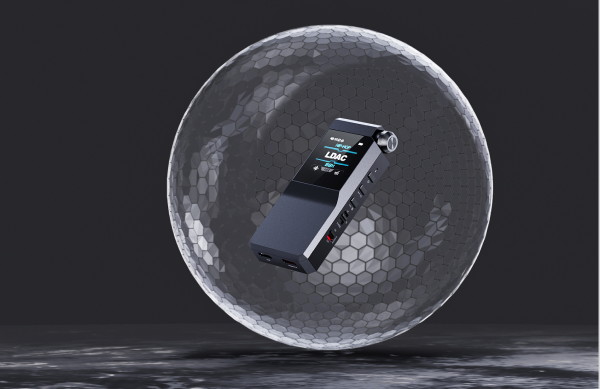
Comprehensively protected, Worry-free listening
Built-in temperature and DC output detection, prevents damage to the device and headphones if abnormal conditions are detected for safer usage.
Volume limit, prevents accidental loud volumes and protects against hearing damage.
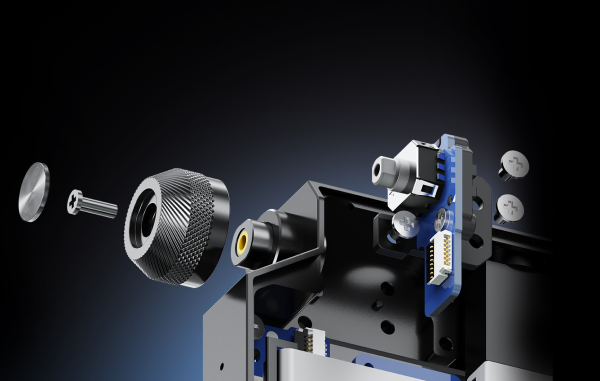
Flagship style All in the details
Pressable volume knob
The eye-catching volume knob features a double-sided 3D engraved design. The exquisite craftsmanship of the pressable volume knob is evident when pressed and rotated, offering an excellent and tactile feel and control.
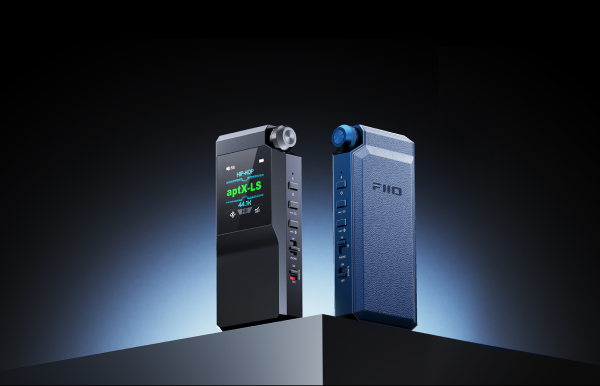
Raw leather crafted, comfortable grip
The sturdy 3D aluminum alloy body with a back cover made of innovative fully bonded raw leather, combined with the two-section front panel design helps to provide a comfortable grip.
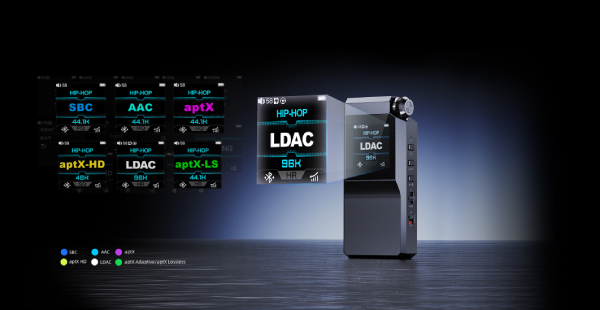
All-new UI, open-and-shut
The new UI made possible by the 1.3-inch IPS color screen supports both Chinese and English displays. The font color even changes along with the audio format. The BTR17’s overall design is focused on making sure the user can intuitively use it and easily grasp its current status.
A flagship experience In every aspect

Buttons and ports labeled
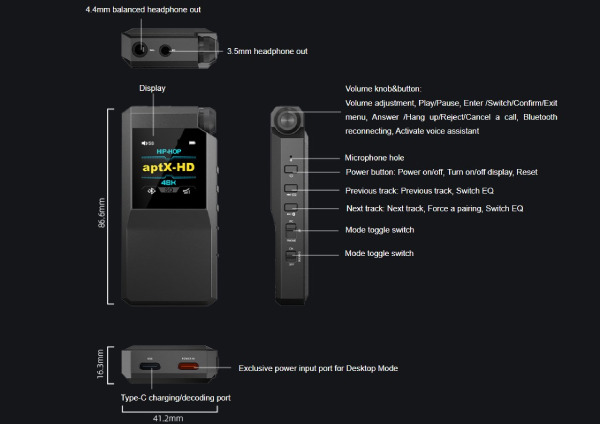

Parts list
| General Specifications | |
|---|---|
| Color | Black/Blue |
| Weight | About 73.4g |
| Driver-free mode (switch mode) | Supported |
| MQA | MQA full decoding |
| Gain | L/H |
| Display | 1.3-inch color IPS display |
| Bluetooth reception (5.4) | AAC/SBC/aptX/aptX Adaptive/aptX Lossless/aptX HD/LDAC |
| Max supported sampling rate | PCM: Up to 768kHz/32bit |
| Max supported sampling rate | DSD: Up to DSD512 (Native), DOP256 |
| Bluetooth codec indication (light color indicator and characters on display | Blue: SBC; Cyan: AAC; Purple: aptX; Yellow: aptX HD; White: LDAC; Green: aptX Adaptive/aptX Lossless |
| Deep standby | Without any connection, it automatically enters power saving shutdown state in 3 minutes, and the timer can be set in the app |
| Hardware solution | DAC: ES9069Q*2, USB DAC: XMOS XU316*1, Bluetooth: QCC5181 |
| Volume control | Physical volume knob |
| Dimensions | About 16.3×41.2×86.6mm |
| Desktop mode | Supported |
| Channel balance | <0.2dB |
| Status indication | Displays Bluetooth codec, volume level, gain, USB mode, sampling rate, etc. |
| Firmware upgrade | Bluetooth firmware supports OTA upgradeXMOS/System firmware supports upgrade through USB |
| Adaptive impedance | PO: 8~150ΩBAL: 8~300Ω |
| FIIO Control | Supports settings through app |
| In-vehicle mode | Automatically turn on/off with the vehicle's USB |
| Microphone function | Supports Bluetooth voice call, built-in omnidirectional+CTIA in-line control mic |
| USB | Type-C USB (Power supply/Data transfer)/Type-C USB POWER IN (Orange, Power supply) |
| Balanced headphone out | Standard 4.4mm port |
| Power Supply Parameters | |
| Power supply | DC 5V ≥2A |
| Charging time | ≤2h |
| Battery Life and Test Conditions 3.5mm headphone out: ≥9h | |
| Audio input | Bluetooth receiving |
| Volume level | 23 level |
| Display status | Off |
| EQ | Off |
| Bluetooth codec | AAC |
| Gain | High |
| Playing track and format | MP3 44.1KHz/16bit |
| Load | 32Ω |
| Battery Life and Test Conditions 4.4mm balanced headphone out: ≥8h | |
| Audio input | Bluetooth receiving |
| Volume level | 18 level |
| Display status | Off |
| EQ | Off |
| Bluetooth codec | AAC |
| Gain | High |
| Playing track and format | MP3 44.1KHz/16bit |
| Load | 32Ω |
| Battery Life and Test Conditions 3.5mm headphone out: ≥10h | |
| Audio input | Phone mode (slide the mode switch to PHONE position |
| Volume level | 23 level |
| Display status | Off |
| EQ | Off |
| Gain | High |
| Playing track and format | 44.1KHz/16bit |
| Load | 32Ω |
| Battery Life and Test Conditions 4.4mm balanced headphone out: ≥9h | |
| Audio input | Phone mode (slide the mode switch to PHONE position) |
| Volume level | 18 level |
| Display status | off |
| EQ | Off |
| Gain | High |
| Playing track and format | 44.1KHz/16bit |
| Load | 32Ω |
| Audio Parameters Performance and parameters of headphone output (3.5mm, UAC decoding, Desktop mode: High gain) | |
| Output power | L+R≥330mW+330mW (16Ω, THD+N<1%)L+R≥280mW+280mW (32Ω, THD+N<1%)L+R≥30mW +30mW (300Ω, THD+N<1%) |
| THD+N | <0.0015% (1kHz/-18dB@32Ω) |
| Frequency response | 20Hz~80kHz: attenuation<3dB20Hz~20KHz: attenuation<0.1dB |
| Output impedance | <1Ω |
| Crosstalk | ≥78dB |
| Peak output voltage | 8.5Vp-p |
| SNR | ≥120dB (A-weighted) |
| Noise floor | <3uV (A-weighted) |
| Audio Parameters Performance and parameters of balanced headphone output (4.4mm, UAC decoding, Desktop mode: High gain | |
| Output power | L+R≥480mW+480mW (16Ω, THD+N<1%)L+R≥650mW+650mW (32Ω, THD+N<1%)L+R≥125mW+125mW (300Ω, THD+N<1%) |
| THD+N | <0.00035% (1kHz/-10dB@32Ω) |
| Frequency response | 20Hz~80kHz: attenuation<3dB20Hz~20KHz: attenuation<0.1dB |
| Output impedance | <1.5Ω |
| Crosstalk | ≥120dB |
| Peak output voltage | 17.5Vp-p |
| SNR | ≥126dB (A-weighted) |
| Noise floor | <2.2uV (A-weighted) |
| Audio Parameters Performance and parameters of headphone output (3.5mm, UAC decoding, non-Desktop mode: High gain) | |
| Output power | L+R≥130mW+130mW (16Ω, THD+N<1%)L+R≥140mW+140mW (32Ω, THD+N<1%)L+R≥20mW +20mW (300Ω, THD+N<1%) |
| THD+N | <0.0022% (1kHz/-12dB@32Ω) |
| Frequency response | 20Hz~80kHz: attenuation<3dB20Hz~20KHz: attenuation<0.1dB |
| Output impedance | <1Ω |
| Crosstalk | ≥78dB |
| Peak output voltage | 6.5Vp-p |
| SNR | ≥120dB (A-weighted) |
| Noise floor | <2.1uV (A-weighted) |
| Audio Parameters Performance and parameters of balanced headphone output (4.4mm, UAC decoding, non-Desktop mode: High gain) | |
| Output power | L+R≥180mW+180mW (16Ω, THD+N<1%)L+R≥300mW+300mW (32Ω, THD+N<1%)L+R≥35mW+35mW (300Ω, THD+N<1%) |
| THD+N | <0.0008% (1kHz/-4dB@32Ω) |
| Frequency response | 20Hz~80kHz: attenuation<3dB |
| Output impedance | <1.5Ω |
| Crosstalk | ≥105dB |
| Peak output voltage | 9.3Vp-p |
| SNR | SNR |
| Noise floor | <2.3uV (A-weighted) |